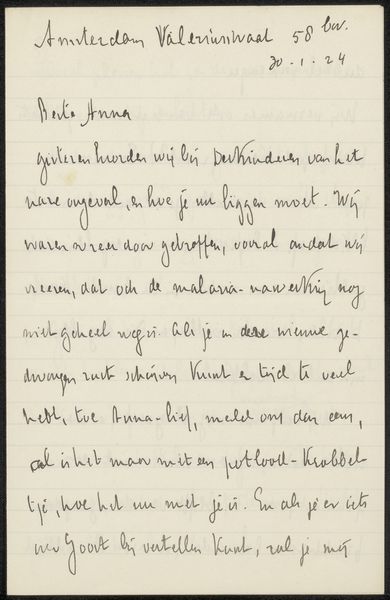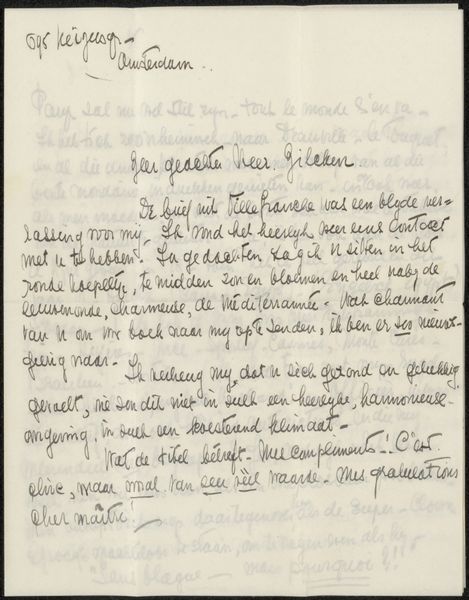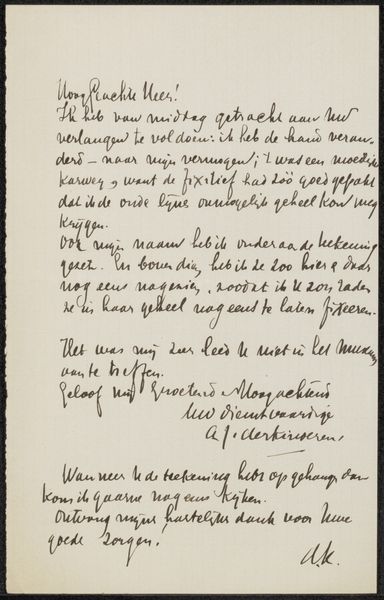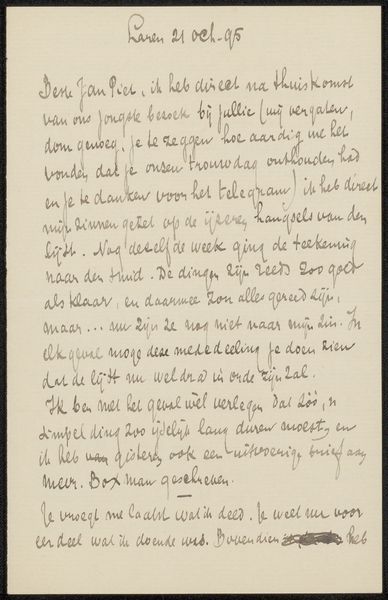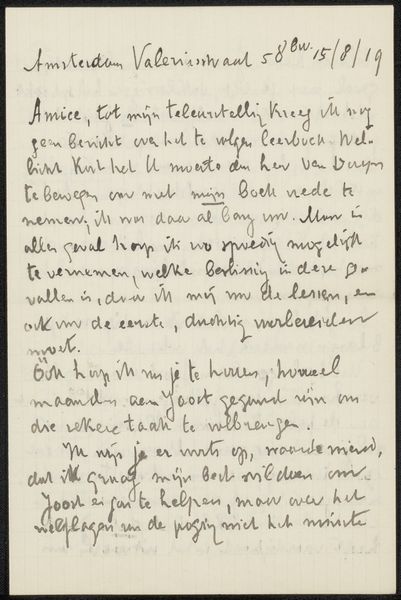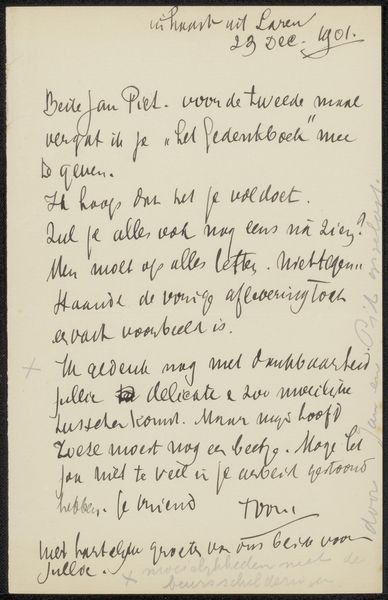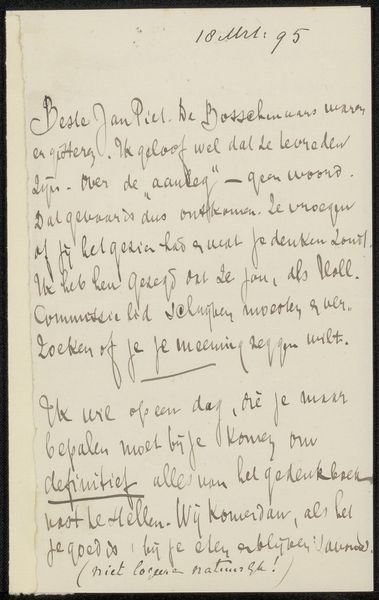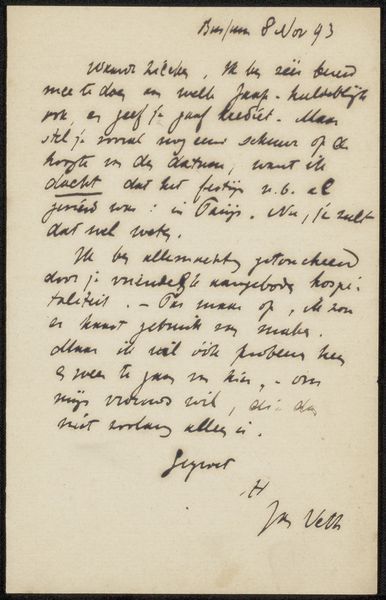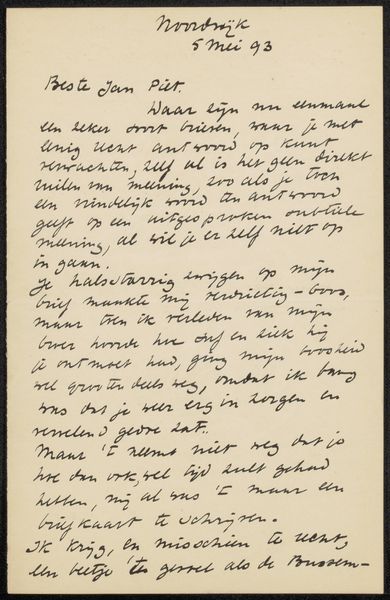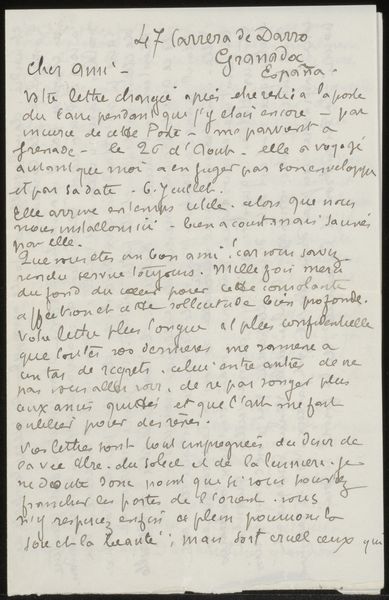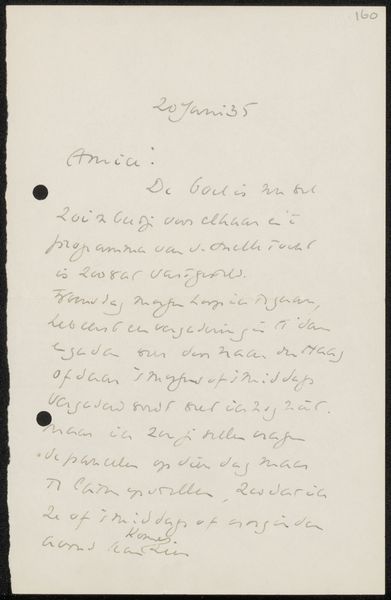
drawing, paper, ink, pen
#
portrait
#
drawing
#
paper
#
ink
#
pen
Copyright: Rijks Museum: Open Domain
Curator: This drawing, titled "Brief aan Jan Veth," attributed to Antoon Derkinderen, and potentially dating between 1901 and 1925, offers us a glimpse into correspondence of the past, created using pen and ink on paper. What's your initial response to this piece? Editor: My first impression is a certain...intimacy. The handwritten script, the close cropping of the letter – it feels less like a formal portrait and more like catching someone in a private moment of communication. The thin, consistent linework gives it an understated elegance. Curator: I agree about the intimacy. Considering Derkinderen's artistic circle, we can interpret this not just as a note but also a carefully composed message within a network. Jan Veth was a very influential figure in Dutch art at the turn of the century as critic, artist and eventually, as professor, and we can suppose it's something akin to an intellectual endorsement of sorts. The deliberate choice of language and tone is crucial here. Editor: From a structural standpoint, the writing itself forms the visual content. It lacks the illustrative embellishments, focusing the viewer solely on the text's texture and flow. Notice how the dense clusters of text alternate with looser arrangements creating a dynamic visual rhythm. It draws attention through visual presentation of thoughts on the page. Curator: Exactly, the legibility plays with aesthetics. The paper, with its lined guide on the left, provides an interesting contrast to the freehand script, emphasizing both order and spontaneity. How the visual presentation, even in something so everyday, underscores artistic decision-making that can provide valuable context. The letter seems to be an apology for being misinformed by the media about some anonymous document. Perhaps the work that Jan Veth’s judgement might come to clarify in the public sphere. Editor: I would emphasize too how a close examination of its materiality, helps deconstruct this correspondence as it becomes artwork. Curator: And ultimately that it is transformed into a dialogue that reveals a web of creative influences, aesthetic choices, and political currents shaping its narrative. Editor: Indeed, and one where we ourselves become interpreters.
Comments
No comments
Be the first to comment and join the conversation on the ultimate creative platform.
